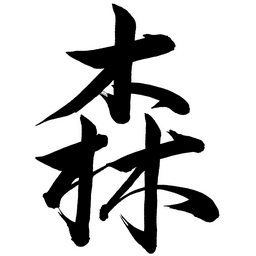| Articles | |
| Friederike Assandri | Laozi’s Eclipse and Comeback: The Narrative Frame of the Benji jing |
| Stephen Eskildsen | Do Immortals Kill? The Controversy Surrounding Lü Dongbin |
| Louis Komjathy | Mapping the Daoist Body (1): The Neijing tu in History |
| Robert Santee | Stress Management and the Zhuangzi |
| James D. Sellmann | Establishing the Altar: The Realized Writ of the Suqi Rite in the Grand Jiao |
| Forum | |
| Xun Liu | Profile of a Quanzhen Doctor: Abbot Huang Zongsheng at Wuhan’s Monastery of Eternal Spring |
| Scott P. Phillips | Portrait of an American Daoist: Charles Belyea / Liu Ming |
| Robin R. Wang | Daoists on the Southern Marchmount |
| Michael Rinaldini | How I Became A Daoist Priest |
| Livia Kohn | Grand Offering in Hong Kong |
| Elijiah Siegler | Field Notes: Taoist Tai Chi Society & Fung Loy Kok Temple |
| Michael Winn | Daoist Neidan: Lineage and Secrecy Challenges for Western Adepts |
Friederike Assandri – Laozi’s Eclipse and Comeback: The Narrative Frame of the Benji jing
The Six Dynasties, Sui, and early Tang dynasties were a period of intense and complex development for Daoism. New scriptures, new gods, and new cosmological systems appeared, and Daoism found its way into the highest levels of society and the imperial court. This necessitated a streamlining and integration of very different traditions and teachings. Imperial patronage, competition with Buddhism, as well as dedicated work by proponents of different Daoist currents created a complex interplay, which still has to be studied in detail. This task is especially daunting because historical or historiographical documentation concerning the development of Daoism in the Six Dynasties is rather scarce. In this paper, I propose a hermeneutic reading of the framework narrative of the Benji jing (Scripture on the Original Beginning) to gain some insights about this development. The text was composed during the Sui and early Tang dynasties, a time when the process of integration was well advanced but had not yet concluded. The framework narrative, as seen in the hermeneutical context of the historical development of Daoism, reflects internal Daoist struggles and highlights the problems of the esoteric transmission of scriptures. A closer look at the position of the deity Laozi in the text, moreover, betrays tensions between him and the various deities of the southern traditions. The latter had increasingly eclipsed him until the rise of the Tang re-established him in the first ranks of the Daoist pantheon. I argue that these tensions may very well reflect tensions among different groups of Daoists in the process of integration during the Sui and the early Tang.
Stephen Eskildsen – Do Immortals Kill? The Controversy Surrounding Lü Dongbin
This paper examines what Buddhist texts, vernacular novels and Daoist texts variously tell us about Lü Dongbin’s sword, and whether or not he ever used it to carry out or attempt murder. It then proceeds to examine—through Tang and Song Daoist sources—what sorts of actual Daoist practices and claims may have been instrumental in engendering such stories.
Louis Komjathy – Mapping the Daoist Body (1): The Neijing tu in History
This article examines the history and content of the Neijing tu (Diagram of Internal Pathways), a late nineteenth-century stele currently housed in Baiyun guan (White Cloud Monastery; Beijing). The diagram is one of the most well-known illustrations of the Daoist body, though its historical provenance has not been sufficiently documented to date. The present article provides a more complete account of its context of production and dissemination, namely, within the context of Baiyun guan, the late imperial Longmen (Dragon Gate) lineage of the Quanzhen (Complete Perfection) monastic order, and elite imperial court culture. I then turn to a systematic study of its contents and the Daoist methods expressed in its contours. Within its topographical landscape, one finds a specific vision of the Daoist body, a body actualized through Daoist alchemical praxis. As such, the Neijing tu and its various rubbings were more than likely intended as visual aids for Daoist religious training. For readability, the article has been divided into two parts. The current section discusses the diagram’s historical and terminological dimensions. The second part, scheduled to be published in the next issue of the Journal of Daoist Studies, focuses on content and includes a complete bilingual translation with illustrations.
Robert Santee – Stress Management and the Zhuangzi
This paper examines the relevance of the teachings of the Zhuangzi to addressing stress and the physical and psychological problems associated with it. It views the teachings of the Zhuangzi within the context of two basic approaches to addressing stress: the cognitive approach and the experiential approach. And it explores the relationship between the teachings of the Zhuangzi and mind/body medicine, psychonueroimmunology, and cognitive therapy within the framework of stress management.
James D. Sellmann – Establishing the Altar: The Realized Writ of the Announcement Rite in the Grand Jiao
An analysis of the structure, content, and function of the Zhenwen in the Announcement (suqi) ritual shows that its purpose is to enact a feudal-like “contract” with the cosmic powers, spiritual officials, and the Holy-Emperors of the five directions. The ritual provides an opportunity for the priest’s mystical union with the Dao. The Zhenwen offers a strong sense of security to the community that sponsors a Festival of Renewal (jiao) in which the five Zhenwen are implanted in the universe. Because the Zhenwen contacts and “contracts” the sovereign deities of the five directions and their various subordinates, such as the controllers of the charts and registers, this ensures that the proper functioning of the universe continues, and it prevents natural disaster or untimely death. Thus, the Zhenwen fulfills an important role in religious Daoism in that it spiritualizes both the Daoist priest in mystical union and the religious community in securing harmony. The Lingbao zhenwen plays a pivotal function in the liturgy.
